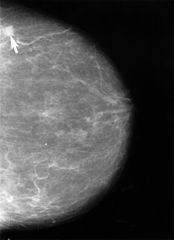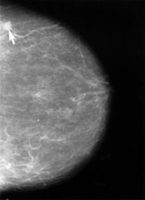
30 Sep Mammograms: Minorities and Poor Less Likely To Report Barriers to Care
MedicalResearch.com Interview with:
Sage J. Kim, PhD
Division of Health Policy and Administration,
School of Public Health,
University of Illinois at Chicago,
Chicago, IL 60612
MedicalResearch.com: What is the background for this study? What are the main findings?
Response: Our study examined the rates at which women who received patient navigation in a randomized clinical trial reported barriers to obtaining a screening mammogram. The trial, called the Patient Navigation in Medically Underserved Areas (PNMUA) study, randomly assigned patients to one of two groups: one received a patient navigation support intervention and the other served as a control. Of the 3,754 women who received the patient navigation intervention, only 14 percent identified one or more barriers to care, which led to additional interactions with navigators who helped overcome barriers.
Black women, women living in poverty, and women who reported high levels of distrust of the health care system were the least likely to report barriers. Women who reported barriers were more likely to have additional contact with navigators and obtain a subsequent screening mammogram. The extra support could help with early diagnosis and better survival and mortality outcomes.
MedicalResearch.com: What should readers take away from your report?
Response: Regardless of whether women are aware of obstacles to screening and treatment or not, having barriers tend to interfere with timely follow up of abnormal test results, thus delay diagnosis and treatment.
Patient Navigation (PN) is an intervention that is known to be effective in helping women address their barriers to timely healthcare. What the current study findings suggest that while PN is effective, often healthcare providers assume that when women receive Patient Navigation, and don’t report barriers, it is because they don’t have barriers. What our findings are saying is that care providers need to be aware of the fact that not all women interact the same with patient navigators and other care providers. Racialized gender images of the ideal women and medical distrust due to historical experiences of discrimination, such as the Tuskegee experiment, affect how minority women, particularly living in poverty, interact and utilize healthcare. What is important is that healthcare providers need to be aware of such social and historical conditions that may affect the effectiveness of interventions, including PN, for minority women. This paper made an argument that the way we train and inform patient navigators and other healthcare providers need to be reengineered. It is healthcare professionals responsibility, not patients, to provide effective interventions for all groups. We see this kind of situation in other cancer types. When a new treatment is introduced, often health disparity gets wider, because some groups take advantage of new treatment or technology, while some others are excluded.
MedicalResearch.com: What recommendations do you have for future research as a result of this work?
Response: In designing interventions, scholars and practitioners need to be thinking more structural barriers. Healthcare providers are striving to reduce health disparities. Our study findings highlight another somewhat unexpected area for improvement. Healthcare providers need to be more proactive. When women report no barrier, it may not be that they don’t encounter barriers. It may require just asking another question or approaching a different way to get at what many women face in their everyday life. We have implemented this approach in survey design and interviews for many years, and studies have shown how survey responses change depending on how and when questions are asked. Healthcare providers are strive for reducing health disparity in the extremely complex US healthcare system and patient navigators are recent innovation that has been proven cost effective in many studies to be useful and helping women to obtain timely follow-up of abnormal tests and early diagnosis. Our study findings highlight another somewhat unexpected area for improvement.
MedicalResearch.com: Is there anything else you would like to add?
Response: We argue that we turn our framework of understanding the issue at hand from whether or not some women do not understand that they have barriers, to what structural factors produce health inequality. Economic and social barriers to care are rooted in racialized and gendered social institutions. Yes, it is important to understand how social and economic structures are setup the way they are. However, inequality can be produced and reproduced by healthcare systems, interventions, and care providers. In designing interventions, scholars and practitioners need to be thinking more structural barriers.
Citation:
Gendered and Racialized Social Expectations, Barriers, and Delayed Breast Cancer Diagnosis
Sage J. Kim PhD, Anne Elizabeth Glassgow PhD, Karriem S. Watson DHSc, MS, MPH, Yamile Molina PhD, Elizabeth A. Calhoun PhD
First published: 24 September 2018
[wysija_form id=”3″]
[last-modified]
The information on MedicalResearch.com is provided for educational purposes only, and is in no way intended to diagnose, cure, or treat any medical or other condition. Always seek the advice of your physician or other qualified health and ask your doctor any questions you may have regarding a medical condition. In addition to all other limitations and disclaimers in this agreement, service provider and its third party providers disclaim any liability or loss in connection with the content provided on this website.
Last Updated on September 30, 2018 by Marie Benz MD FAAD

